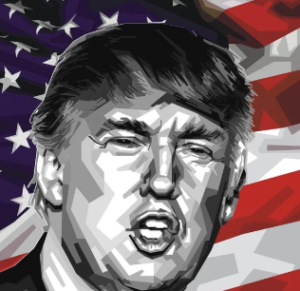$SPY $DXY $BTC
#Trump #ChinaTariffs #CanadaTrade #MexicoTariffs #USChinaRelations #TradeWar #GlobalMarkets #SupplyChain #FinanceNews #StockMarket #EconomicPolicy #Commodities
US president-elect Donald Trump has announced a bold intention to impose new tariffs on China, Canada, and Mexico as his first action in office. Viewing this as a response to illegal immigration and drug trafficking, the proposed tariffs have sparked immediate uncertainty and debate across global markets. Trump’s comments signal a potential shift toward more protectionist policies, which, if enacted, could have significant repercussions for trade, market stability, and geopolitical relationships. The news is already being dissected by investors, who are gauging the potential impact on U.S.-based multinational corporations, currency fluctuations, and the price action in key commodities.
The broader market’s reaction to the news highlights the interconnected nature of global trade and its influence on financial assets. For example, the S&P 500 ($SPY), which serves as a leading indicator for U.S. equities, was mixed in after-hours trading as concerns over heightened trade restrictions started to emerge. A significant focus is on how such trade policies could affect multinational corporations with deep exposure to China, such as tech and industrial firms. Meanwhile, traders in the foreign exchange markets have also taken notice of the U.S. Dollar Index ($DXY). Protectionist policies often create demand for the U.S. dollar as a safe-haven asset, but they can also hurt global growth prospects, which some analysts see as a double-edged sword for currency valuation trends.
In the crypto sector, assets like Bitcoin ($BTC) have shown relative resilience amidst the turbulence, as crypto proponents argue that escalating U.S.-China disputes could reinforce the appeal of decentralized, non-sovereign currencies. Bitcoin, widely dubbed “digital gold,” has increasingly become a hedge against global economic uncertainty. Should trade disputes escalate and weigh on traditional financial markets over time, cryptocurrencies could benefit from renewed interest. However, it remains to be seen whether retail and institutional investors would rotate more heavily into risk assets like crypto in the face of potential tariff-driven inflation and supply chain disruptions.
On the macroeconomic front, international relations could shift dramatically. A sudden imposition of tariffs on major U.S. trade partners like Canada, Mexico, and China could disrupt supply chains and push up costs for both businesses and consumers. Industries that rely on imports, particularly electronics, automotive, and agriculture, are expected to feel the immediate pinch. The longer-term effects could include reduced global trade flows, prompting central banks to reassess their monetary policies to adapt to economic disruptions. The Federal Reserve, in particular, could face increased pressure to balance potential inflation from tariffs against slowing economic growth, casting a further complexity over the U.S. economic outlook. How these factors develop will be key for investors and stakeholders to monitor closely.







Comments are closed.